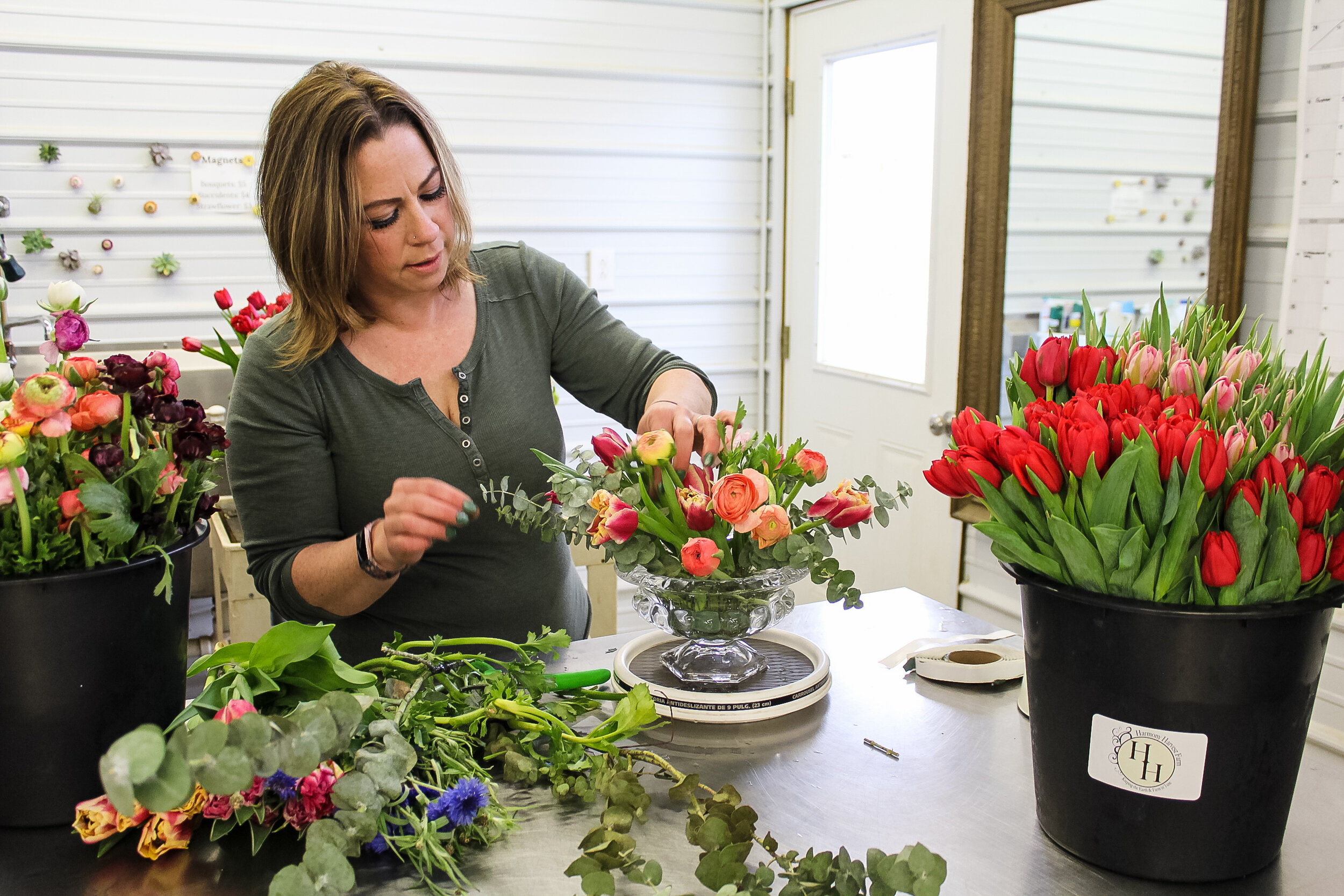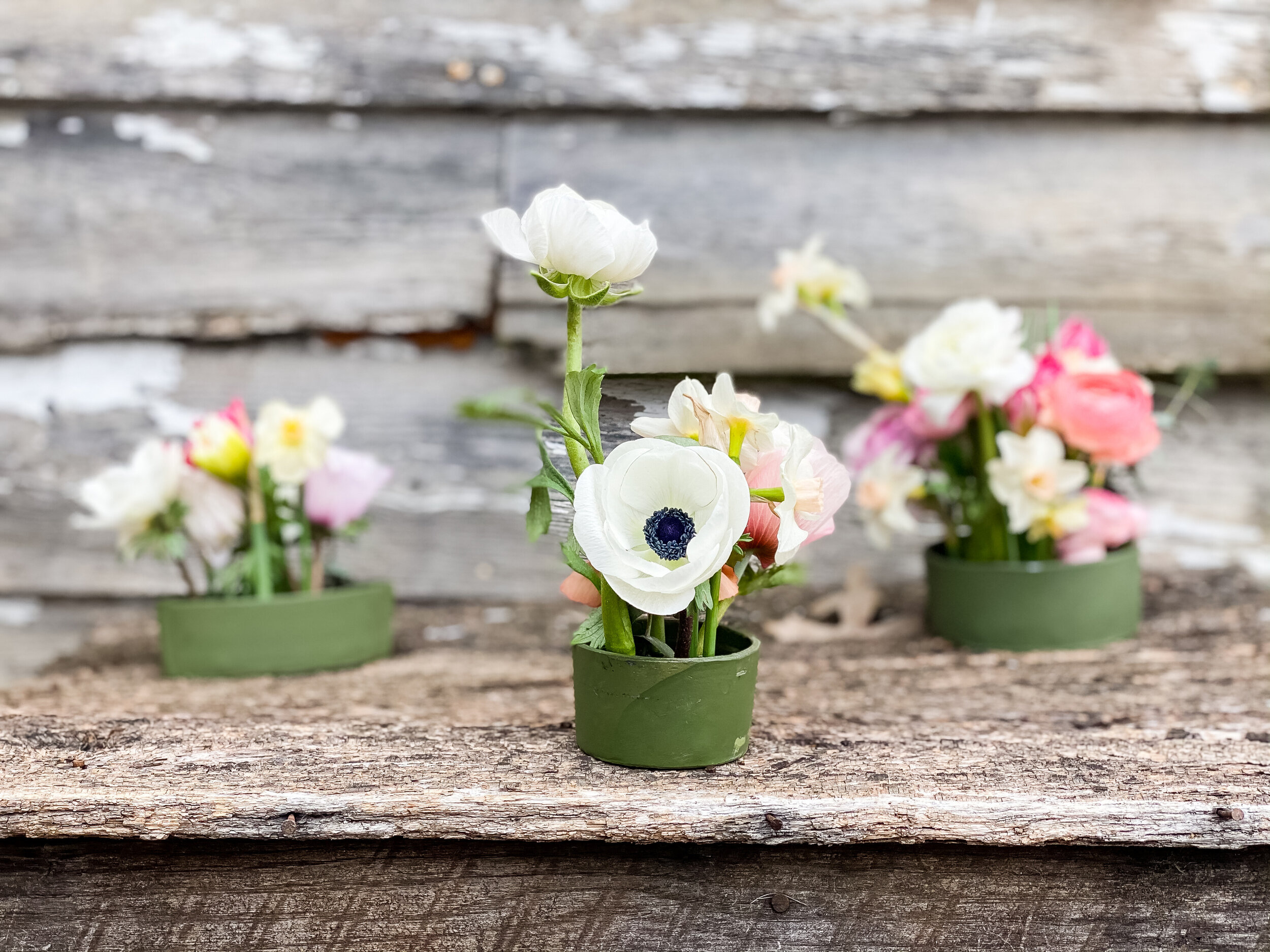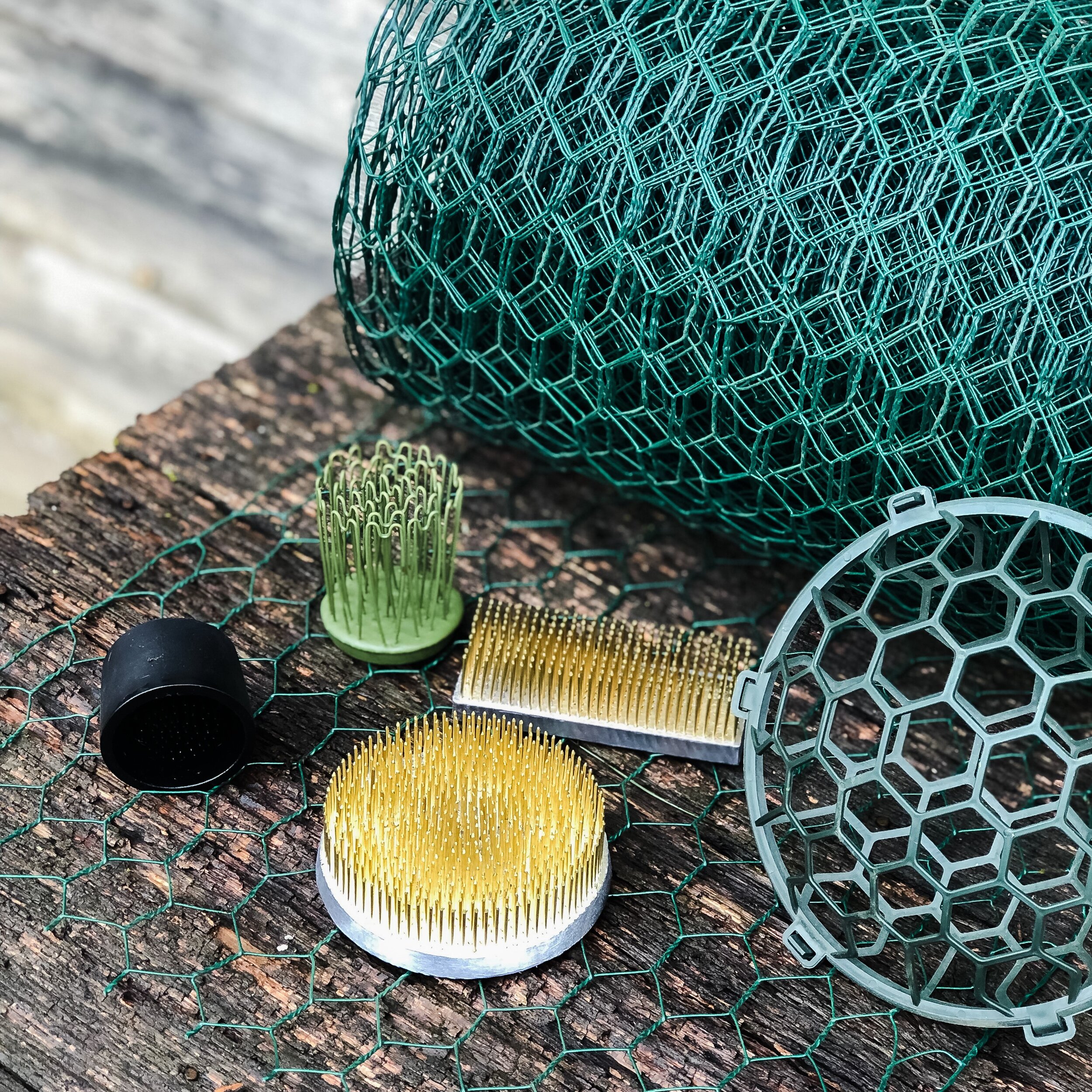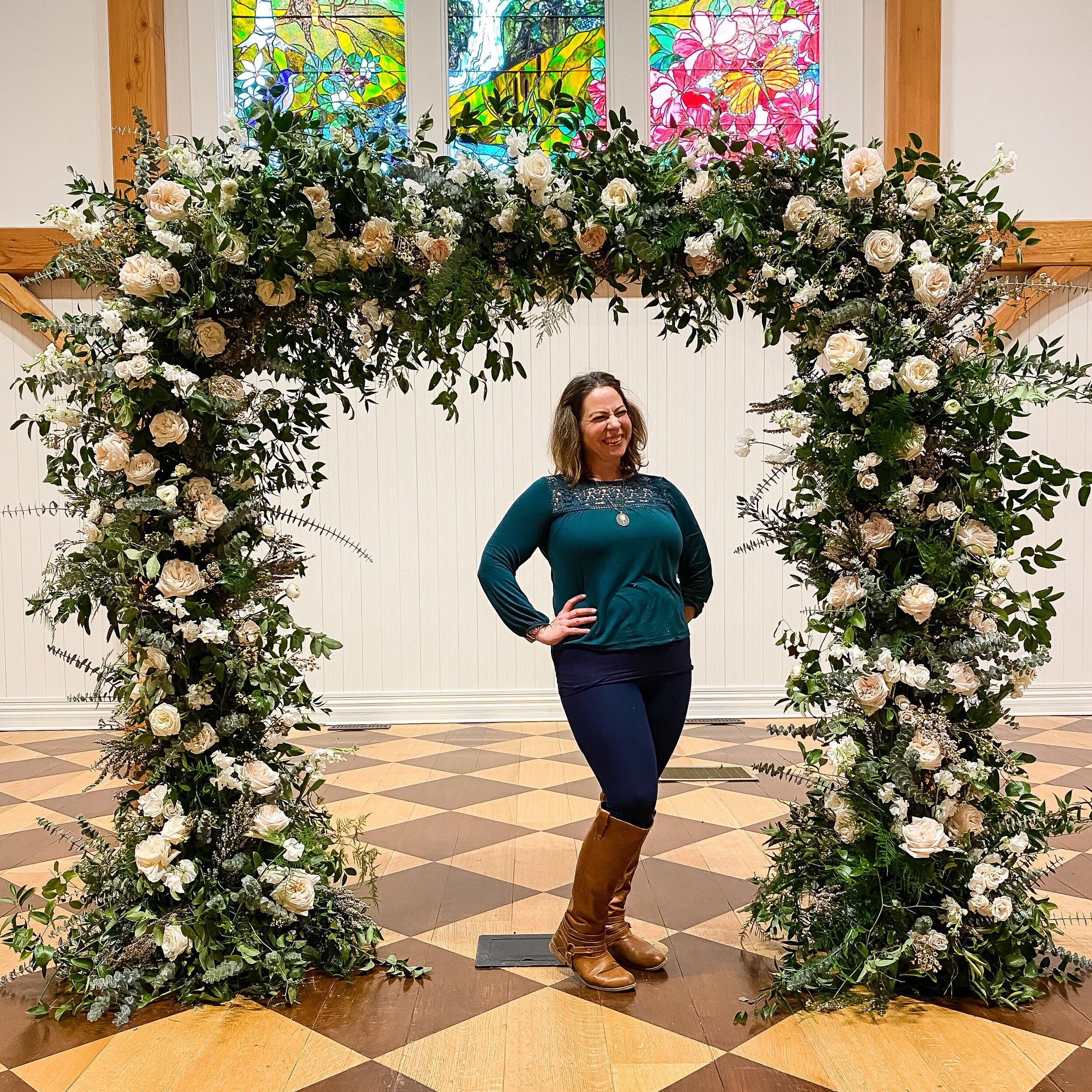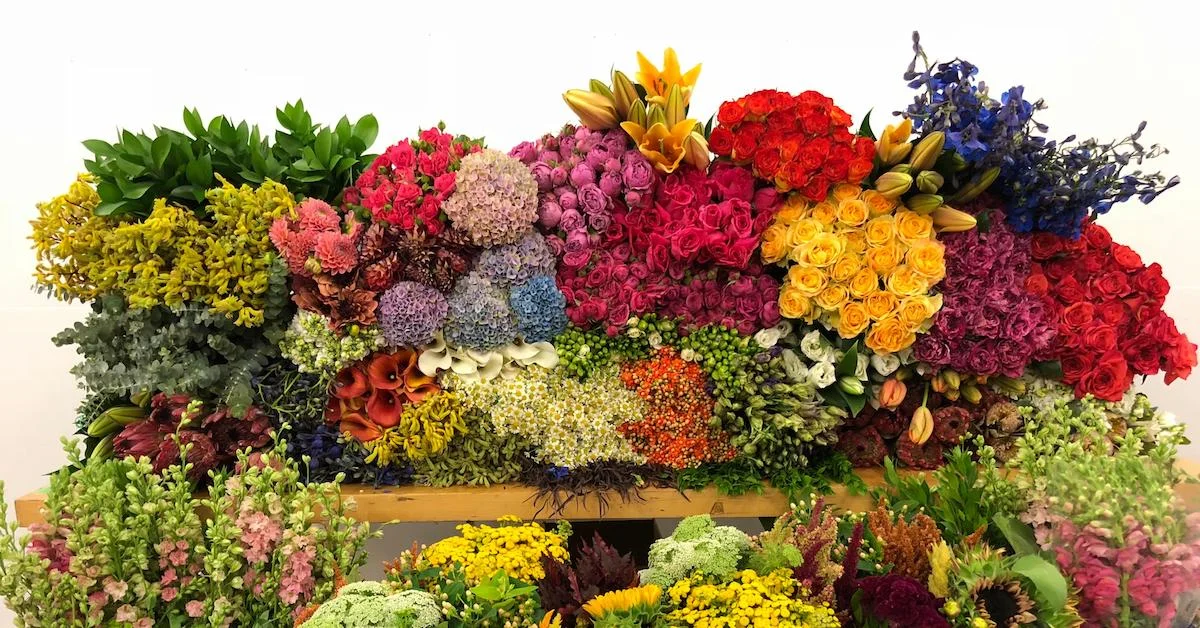Should You Use Sustainable Floral Design Mechanics?
There has been a visible shift to sustainable floral design over the past decade. This has left many experienced designers who were classically trained with floral foam to become overwhelmed with anxiety.
And I was one of them.
I know what you're thinking: How on earth are you supposed to change everything you were taught and absorb the cost of sustainable floral mechanics?
Here’s the answer: It's totally possible (anything is, right?). But it doesn't happen overnight.
Hi, I'm Jessica. You probably know me as a floral designer, head bloom in charge at Harmony Harvest Farm, and one of the co-owners of Floral Genius, the only US manufacturer of flower frogs.
But what you probably don't know is that when my sister and I decided to start Floral Genius back in 2017, I was not a foam-free designer. Shameful, I know. Don't get me wrong; I hated foam. Even though I preferred chicken wire, floral foam was still very much ingrained into my day-to-day mechanics.
It wasn't until we started the Floral Genius that I was forced to put my money where my mouth was and ditch the foam—for good.
First, it's important to understand why I chose to go foam-free.
The environment. Floral foam doesn't break down in the landfill and leaches toxins into the ground. This is because floral foam is actually made of—get this—PLASTIC. And we all know that plastic is forever. Yes, there are "biodegradable" versions of foam, but the truth is, they take forever to break down—and they only breakdown under perfect conditions.
Health. That dust from dry floral foam is no good. It can be harmful to the skin and your respiratory system if inhaled because floral foam contains carbon black, formaldehyde, and phenolic foam. The final product has less than 0.1% toxicity, but we know that prolonged exposure to any toxic chemical is bad news.
Design-ability. I never place stems perfectly the first time. I'm a designer, and as I work through my arrangement, I like to move things. When working in foam, as soon as you poke a hole, it's there for good. When I moved things too many times, the structure of my arrangement was compromised, and sometimes, I had to pull it all apart and start over, which is wildly annoying.
Flower health. As a flower farmer, I can guarantee that flowers do NOT like green water. Those toxins leaching into the earth (see point #1) are now in your flower's water, speeding up the decay process.
So, if you're an environmentally conscious person who strays away from potential carcinogens, likes to have complete control over your design, and wants to make long-lasting arrangements, keep reading.
I have another confession: I don't only use flower frogs. I know, I know, "you're the frog lady, you should be designing exclusively in frogs, right?!" While that would be wonderful (and very profitable for me!), it's not true, nor is it realistic.
As a designer, I like a full toolbox, and there are times where chicken wire and willow forms are my mechanic superstars. I wholeheartedly believed in sustainable design before I was able to figure out how to embrace it myself. So, I took baby steps. I set small goals for my transition and, ultimately, started with what I considered the easiest—centerpieces.
Blue Ribbon Hairpin Frog
I began with the Blue Ribbon Hairpin frogs (pictured left) since they seemed easier for those getting used to frogs (they so are!), and I worked myself up to the traditional pin frog in my compote designs.
The more regularly I used them, the more natural using them became. While I know some designers can pick up a flower frog for the first time and use them seamlessly, for me, it was more of a "practice makes perfect" approach.
As I got more comfortable with the flower frogs, I started finding other ways to weave them into my designs. I started using pin cups to create satellite floral clusters around compotes, elevated centerpieces, and floating candle groups.
It became a bit of an obsession of mine, which was great because every bride we showed it to was totally sold on the look. I started to realize that flower frogs were one of those things that people don't know they want until you show them.
With the popularity of my signature foam-free style growing with my clients, I had to figure out how to tackle the cost of frogs in design. Don't get it twisted—I pay the same price as all designers for the frogs because if I'm going to sell them to my peers, I needed to work through the same things that you would!
For me, I decided to make foam-free style part of my story and value as a designer. I started to tell my clients why ditching the foam was important to me and described how using flower frogs allowed me to achieve the "light and airy" looks spanning their Pinterest boards. I made it a part of my brand.
The cost of the flower frogs was built into my design prices, and the clients could choose to keep them or return them for a discounted rate. The reality is that the flower frog's cost doesn't increase the price of the arrangement by that much, and a few extra dollars on top of an arrangement wasn't a make-or-break moment for my target clients. Simply put, if they didn't like the price of my arrangement with the frog, there's a good chance they weren't going to want the price without the frog.
But, tablescapes are only a part of what we floral creatives conjure up, so how would I follow through in my foam-free beliefs beyond the tabletop?
Pin Cups
The next major piece to tackle was an arbor. How was I going to replace the foam that I had become dependent on? This was a hard switch for me, to be honest, until that one fateful wedding day.
Here’s the story: We were four hours away from home, and the last piece was the arbor. I had one piece of pre-soaked foam that I trudged up a 10-foot ladder, and as I reached to secure the zip ties—it happened. Splat. Green explosion all over a white linen backdrop with only minutes before ceremony time—in front of the bride’s family.
I had to figure it out quickly. While my crew cleaned up the foam remains, I channeled every designer I've been exposed to over the years, and, with a procona of stems and a little bit of paddle wire, I created an armature to replicate the foam cage.
This is a classic Sue McLeary technique where you create a "burrito" using chicken wire filled with stickers. I used the few water picks I had on hand and then wrapped drenched chenille wire around the end of stems when I ran out. It was a heads-down, figure-it-out moment where you muster every bit of composure you can and keep it together.
That day, I made something truly beautiful and structurally sound. As I stepped back and looked at that same arbor (one I'd said many curse words to only a few moments before), I realized that my days of using foam were over. That arbor made me push through my self-set limits when my trusty ol' foam failed me. It was also the last time I ever considered floral foam "trusty."
It was this major letdown that led me to eliminate foam from all of my arbors. Now that I didn't "need" foam, it was easy to see the product's limitations and how I could do better just by thinking outside of the dusty green box.
I began using the burrito technique for all of my arbors and was delighted to find that it gave me so much more freedom. Layering with greens and water-picked flowers, I found my aesthetic that had previously seemed to be voided out when I used foam in the past.
I found my designs were stronger both mechanically and artistically, and I felt free to create in a way that showcased my abilities. The absence of foam meant there was more space for me.
Since debunking the big things, the small things have gotten easier, and frankly, more fun. I look for mechanical inspiration everywhere, and I use my tools—all of them.
I still have an unhealthy love affair with chicken wire, you'll find a case of Holly Chapple Pillows always in stock at my shop, water picks are as common as rubber bands, and of course, my flower frog collection continues to grow (and test the weight limits of the shelves I keep them on.)
The moral of the story is that everyone's foam-free journey is different, and it takes time. Start with things that are easy for you, and once you find your footing, start playing. Play a lot. Cut stuff up. Break stuff down. Twist it. Form it. Tape it. Glue it. You'll find your sweet spot and speed the more you practice. Even if you say that you'll always use foam for something or another, don't sell yourself short.
If you'd have any questions, feel free to reach out to me on Instagram @harmonyhrvst. You can also find the full line of Floral Genius flower frogs at hhfshop.com.


